A History of Ford’s Product Development Center
by Todd Duhnke
Dean’s Garage is noted primarily for recognizing the work and accomplishments of the countless stylists who designed the cars we all remember and cherish. But there are other interesting elements to the styling story. One of them is the facilities that these talented people worked in and the history surrounding them. With that let’s look at Ford’s Design Department, later named Styling Center in May of ’55 when George Walker became Vice President, and lastly renamed about 2000 as the Product Development Center.
In May of 1946 Henry Ford II announced that Ford was going to develop and build an all-new engineering and design center on 800 acres with nine buildings on mostly undeveloped land west of Oakwood Blvd. in Dearborn. A new home primarily for what had become commonly known as the Design Department. The Design Department for Ford products had a bit of a rocky start as Henry Ford concentrated purely on engineering. It was not till his son, Edsel, pushed the issue with his father that the look of a Ford automobile became just as important as its technical features. Clearly, Harley Earl’s hiring by GM also played a significant role in this awakening. With that Edsel carved out space for Bob Gregorie and himself in the Engineering Building, otherwise known as the EEE, to start the process of designing beauty in the 1930’s Fords and Lincolns. In May of 1935 Edsel began to call it the Design Department though it still was under Engineering’s auspices. Before Edsel, Engineering either drew a body to build on their engineering prowess or had an independent body builder like Briggs do the design work. The EEE Building, on the east side of Oakwood Blvd., was directly behind The Henry Ford Museum and is still in use there today.
Henry Ford II, who understood the importance of design, wanted to bring all elements of product development into one facility. Before the dedication of the center in ’53 elements of this task were spread out among a variety of buildings and locations within the huge EEE. In addition, the EEE Building was Engineering’s domain, and they were not too keen on sharing space with this upstart Design Department.
So, starting in 1951 Ford began work to complete the task set out by HFII.
Photos: Ford Design
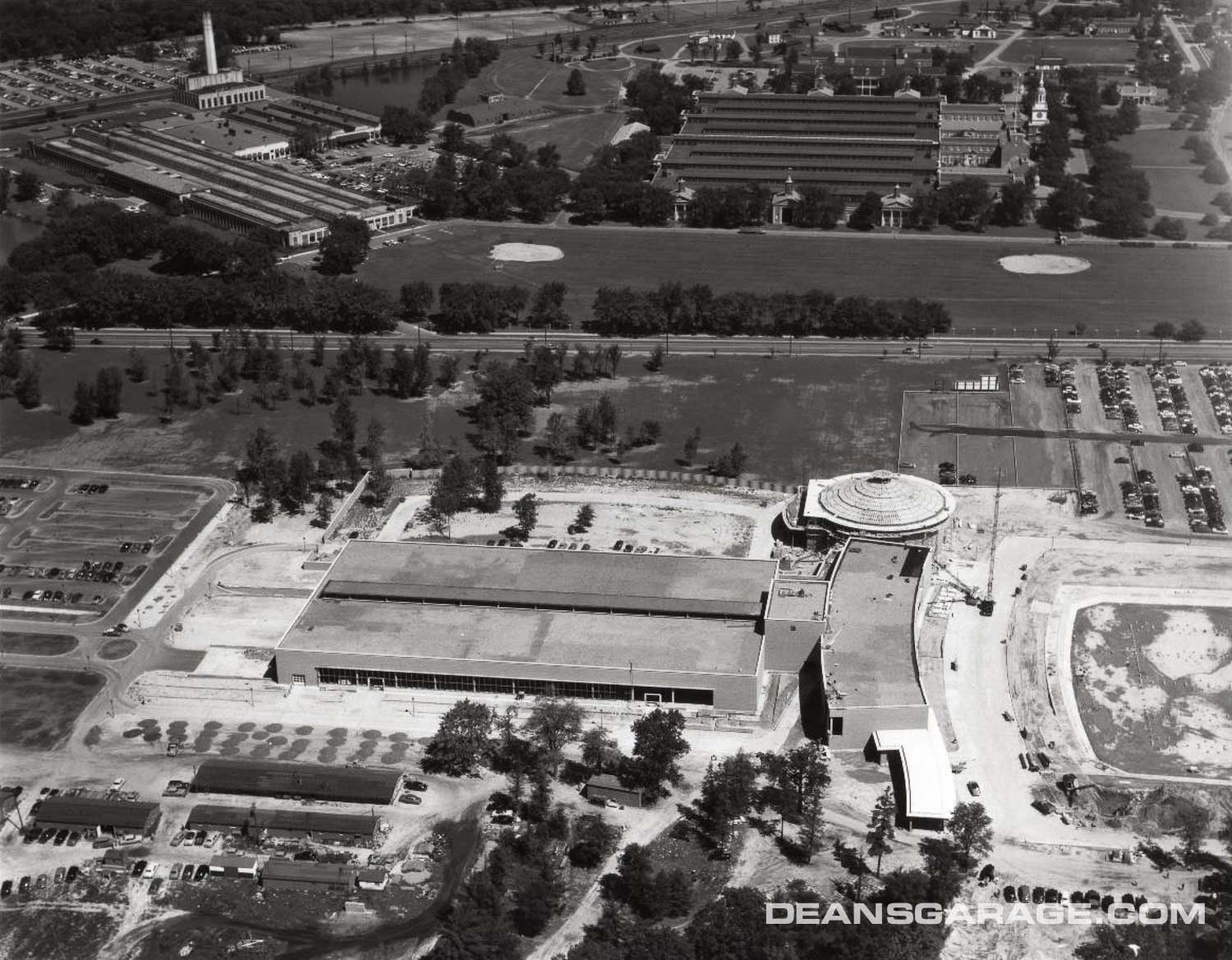
In this first photo we see the Design Department (nee PDC) under construction, likely taken in the summer of 1952. The long building in the center of the photo is where the individual design studios reside. Shops in the basement underneath. The curved building to the right is where the Mahogany Row offices were for the executives. Just below that with the white looking roof is the large reception area. Above the offices in the photo is the Styling Rotunda where clay models were displayed on turntables to gain approval of management. It was styled to look somewhat like the famous Ford Rotunda from 1934, which unfortunately burned down in 1962. And lastly, left of the Styling Rotunda is the outdoor patio and its 14-foot high serpentine brick wall where full scale clays could be taken outside in the sunlight for review.
Note also in this photo’s upper left-hand corner is the EEE Building and to its right The Henry Ford Museum. That’s Oakwood Blvd. bisecting the EEE from the Design Department construction site.
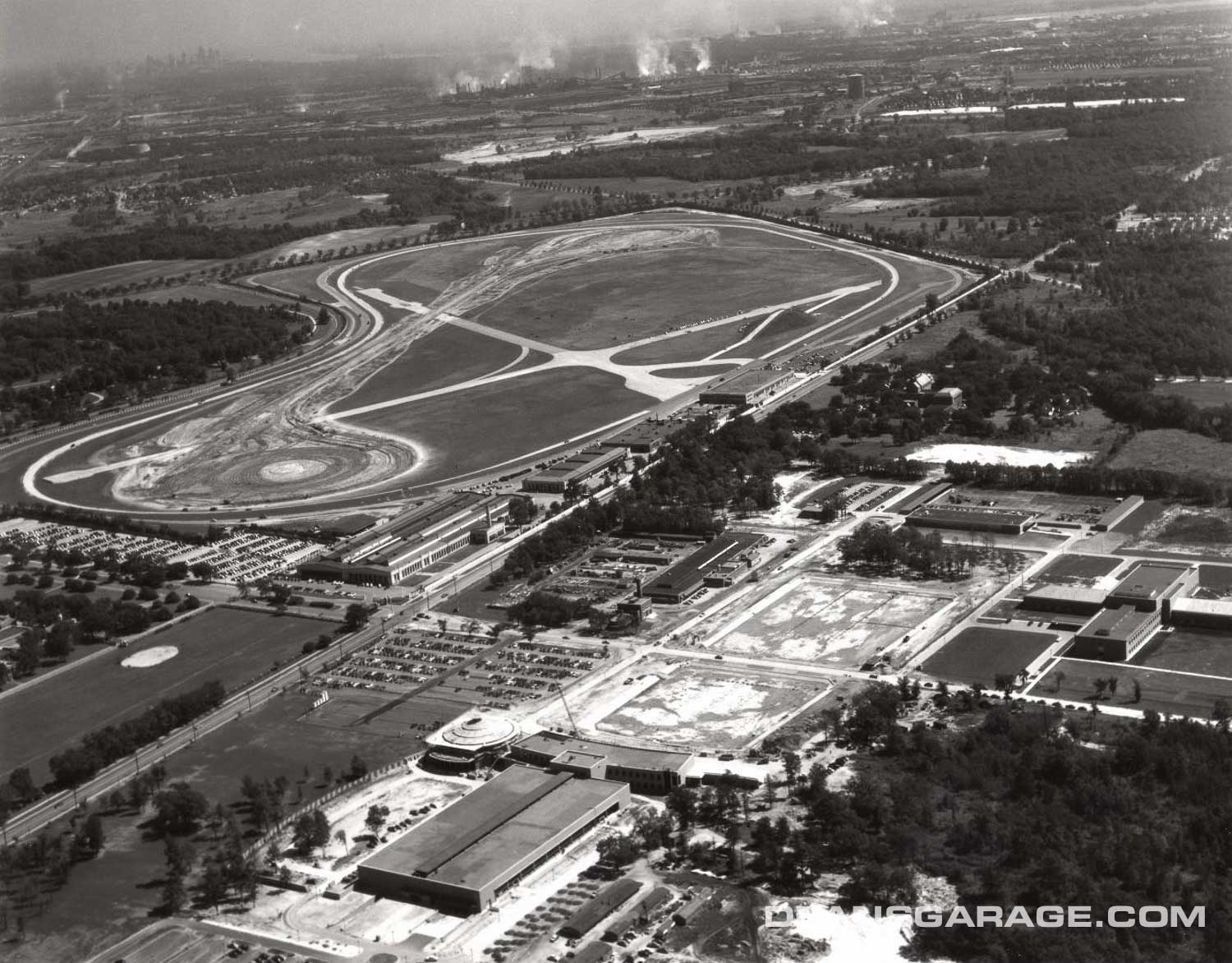
In this next image, taken the same day, we are looking southeast towards the Test Track and The River Rouge plant in the distance. In front of the offices a huge reflecting pool was installed. Kitty-corner to the Design Department across Oakwood are the hangers where the Ford Tri-Motor aircraft were built. In addition, along
Oakwood, you can make out The Dearborn Inn, the world’s first airport hotel, and the original control tower. Henry Ford built the airport for the City of Detroit, and it was later converted to a Ford test track. Its original runways are still clearly in view.
In May of 1953 President Eisenhower helped Henry Ford II dedicate the now completed facility. An important part of celebrating Ford’s Golden Jubilee 50th Anniversary. Two years later the name of the facility changed to the Styling Center.
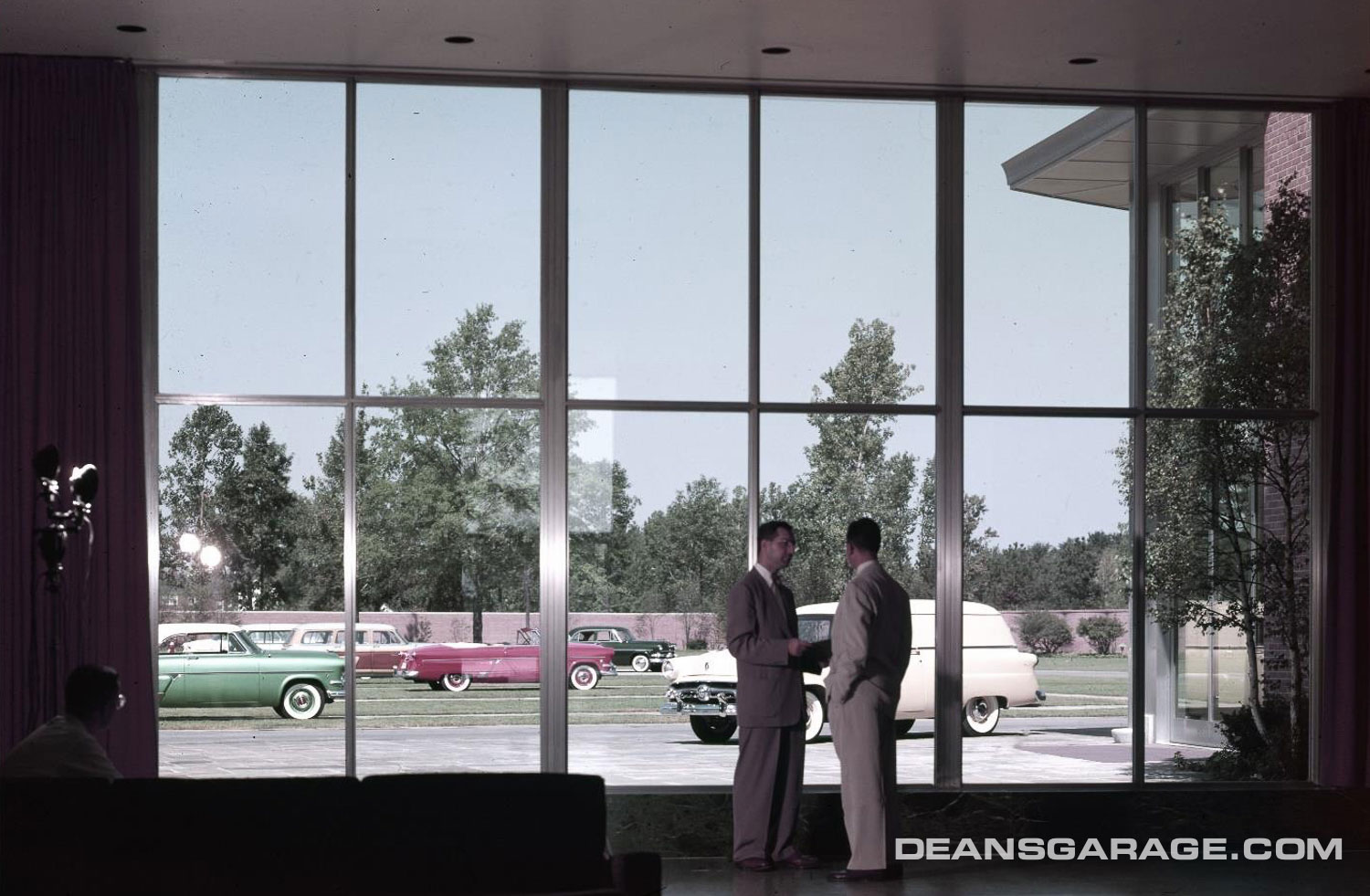
Here we have two gentlemen looking out the north side of the newly completed Styling Rotunda towards the patio area at early production ’54 Fords. One of the very first all new products designed in the new facility was the ’55 Thunderbird.
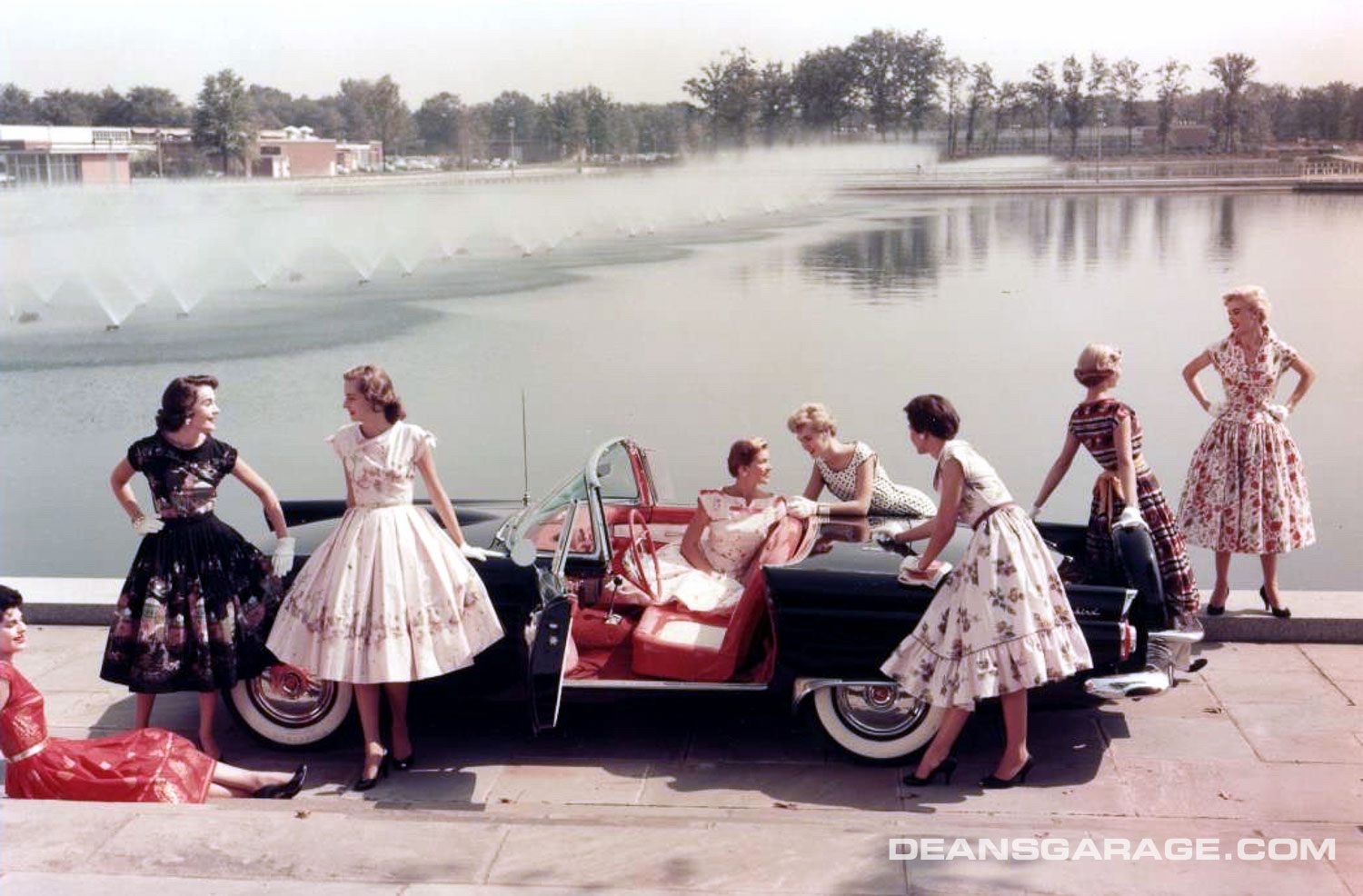
Here some models are showing off 1956’s finest fashions between the Styling Center offices and the reflecting pool mentioned above with a ’56 Thunderbird
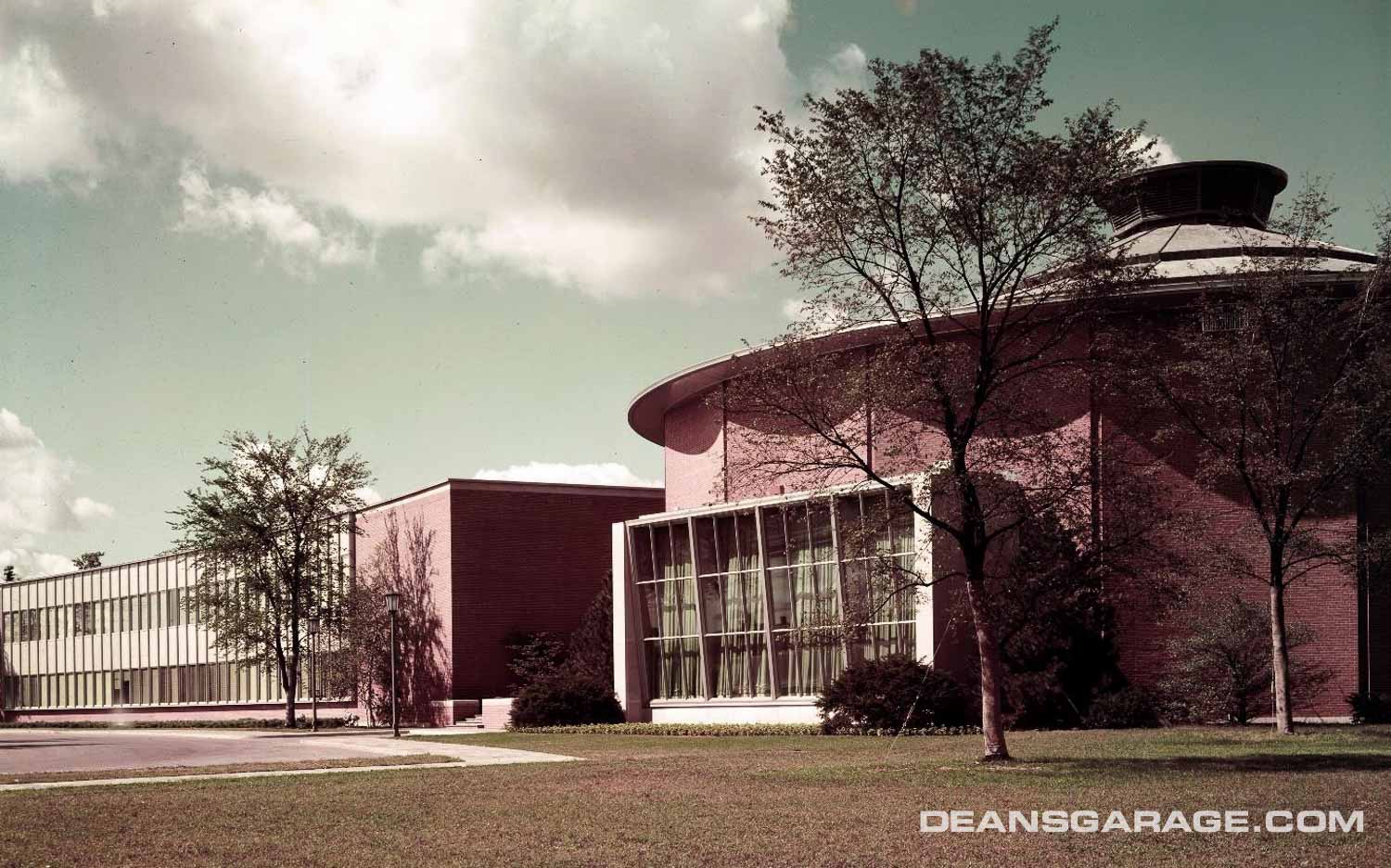
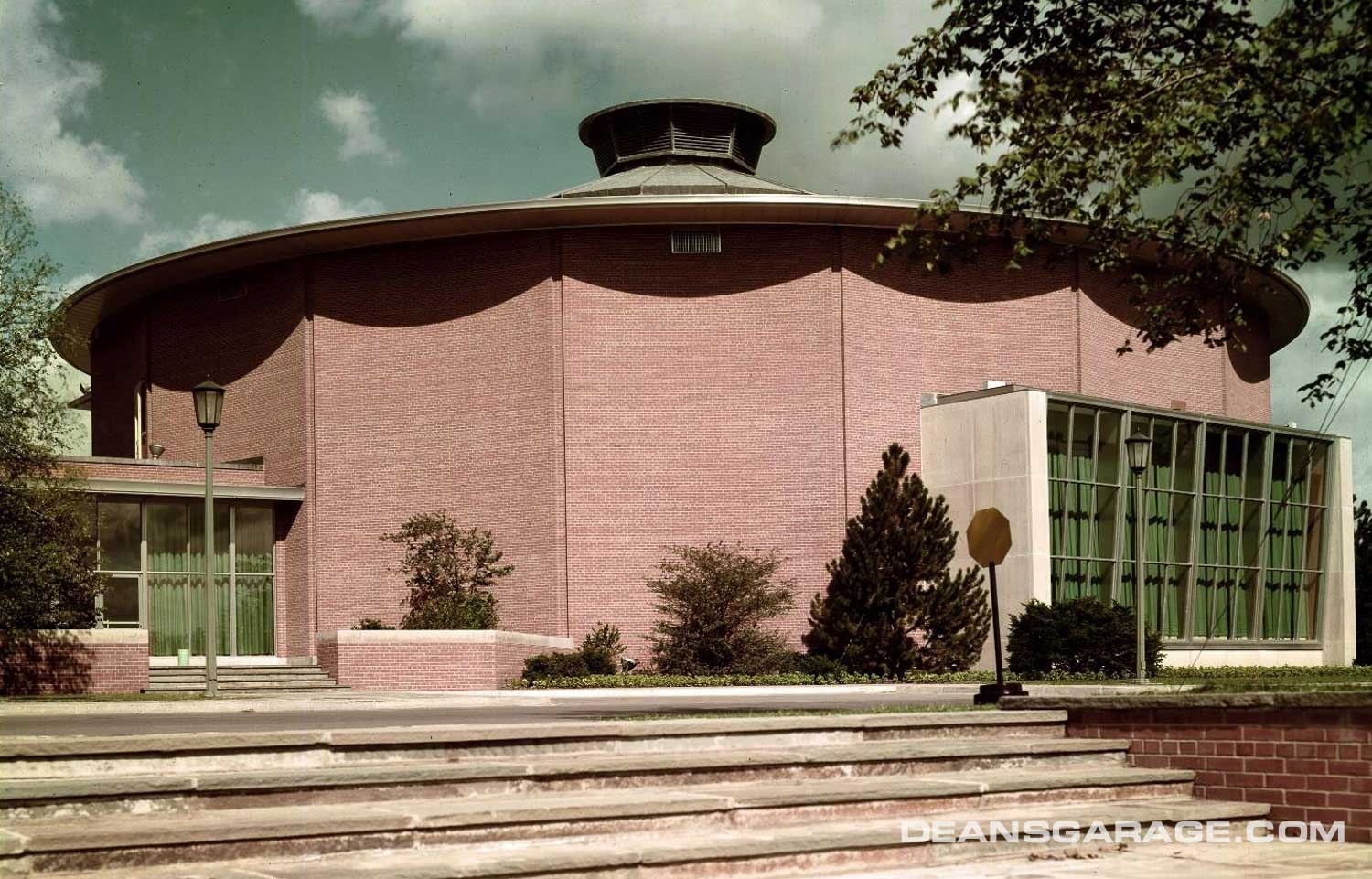
Top two photo were taken in 1954 of the finished facility.
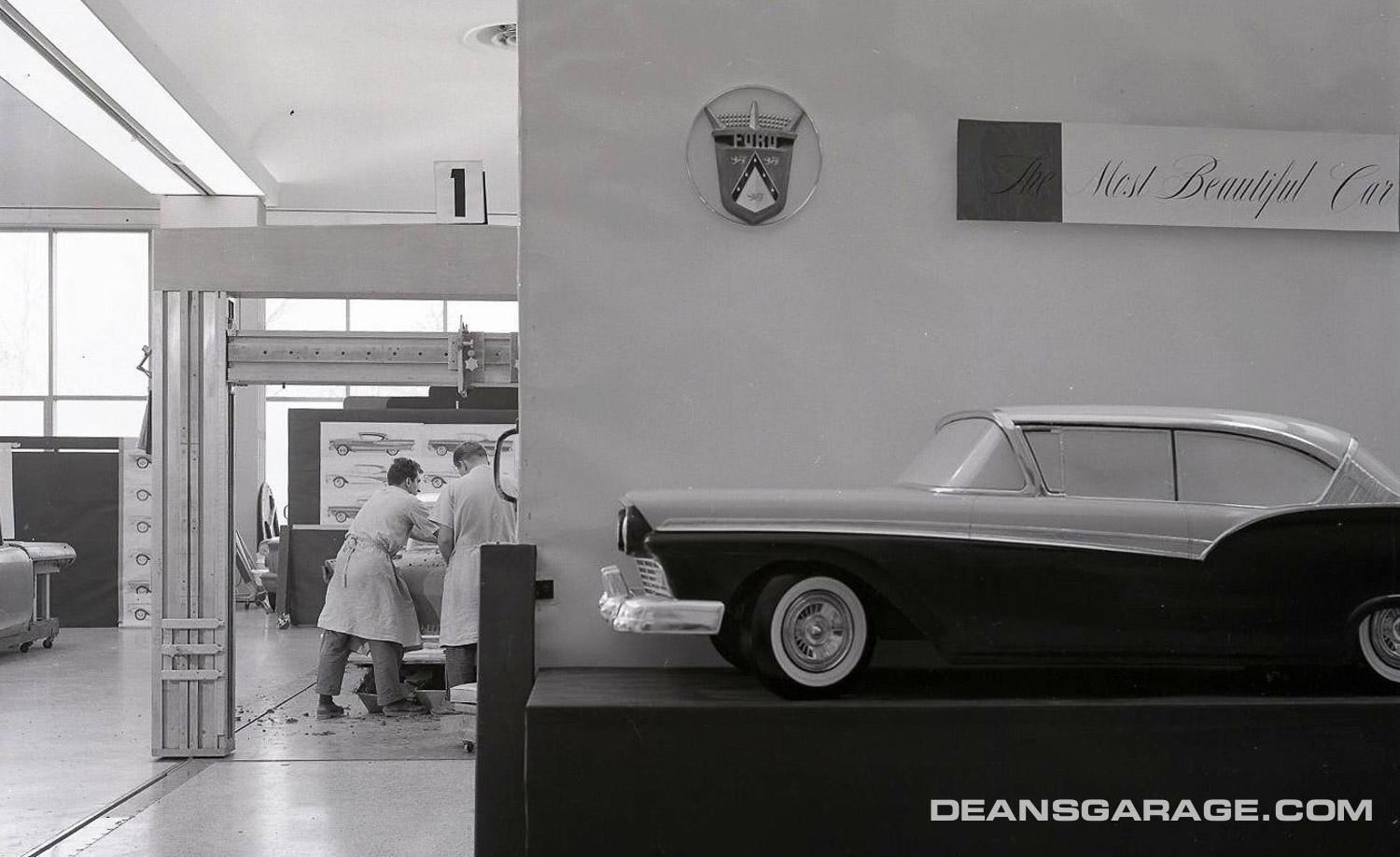
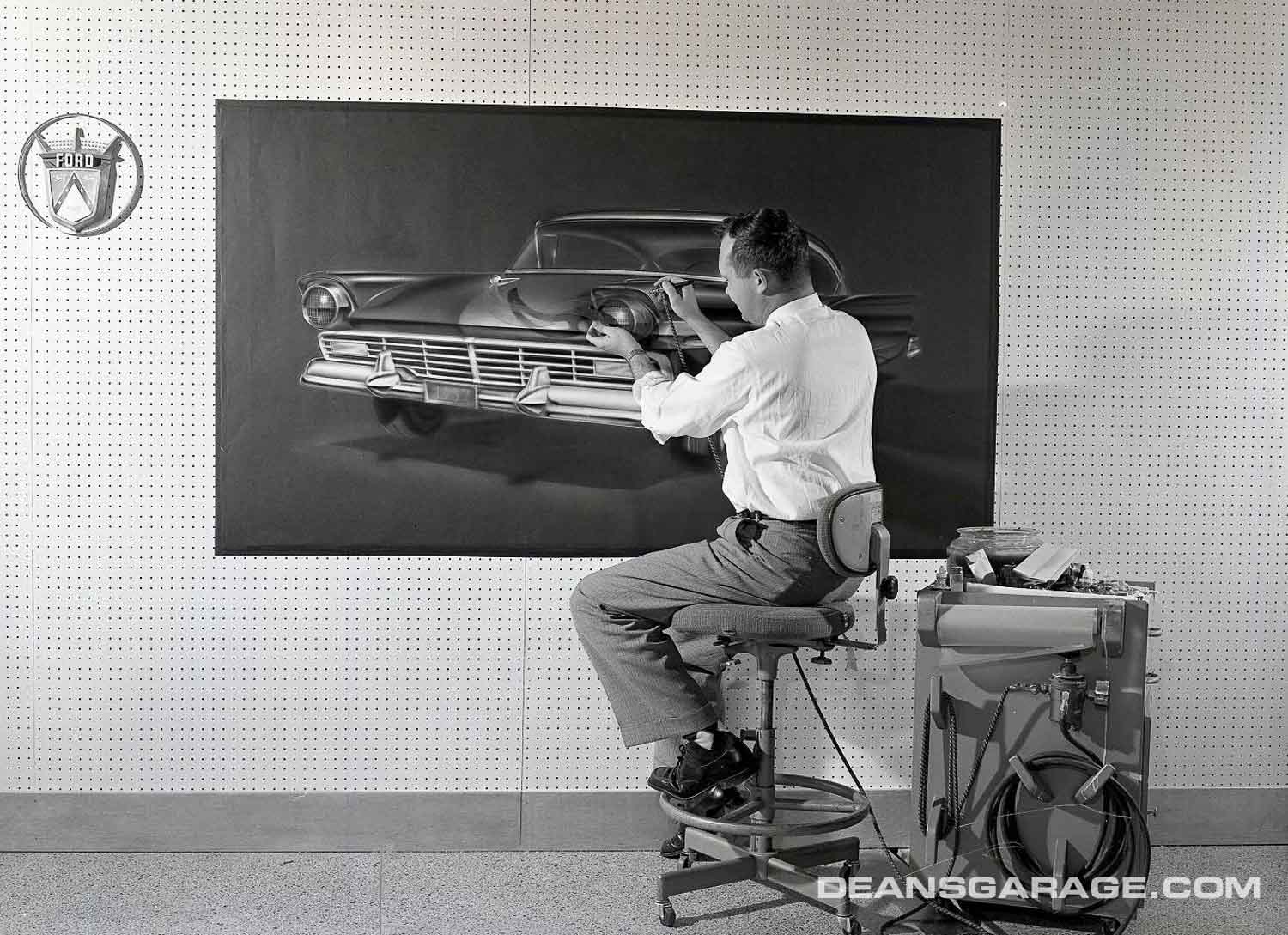
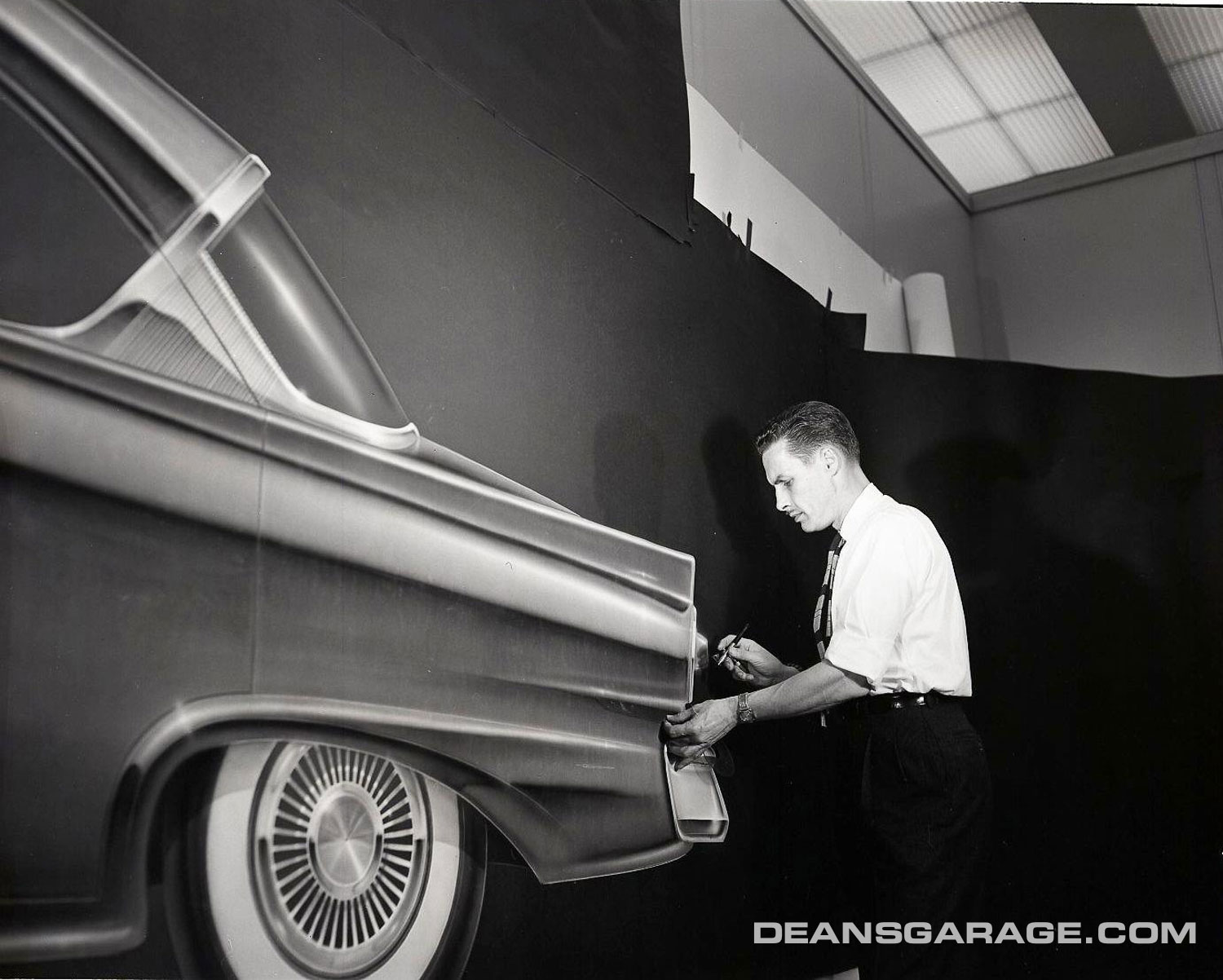
Here designers are putting the finishing touches on the ’57 Ford.
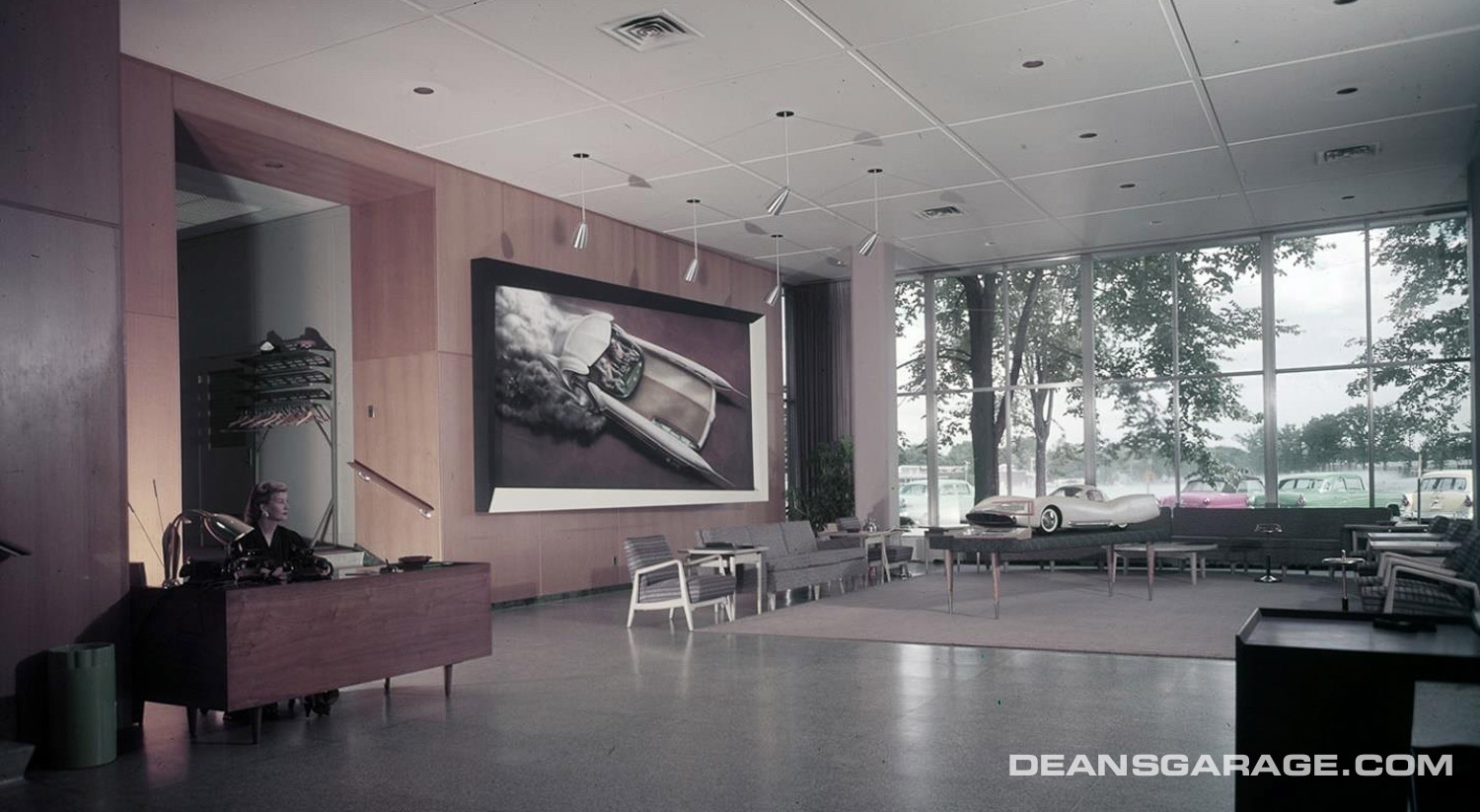
Taken in 1956, here is the Mid-Century Modern reception area and entrances to the executive offices.
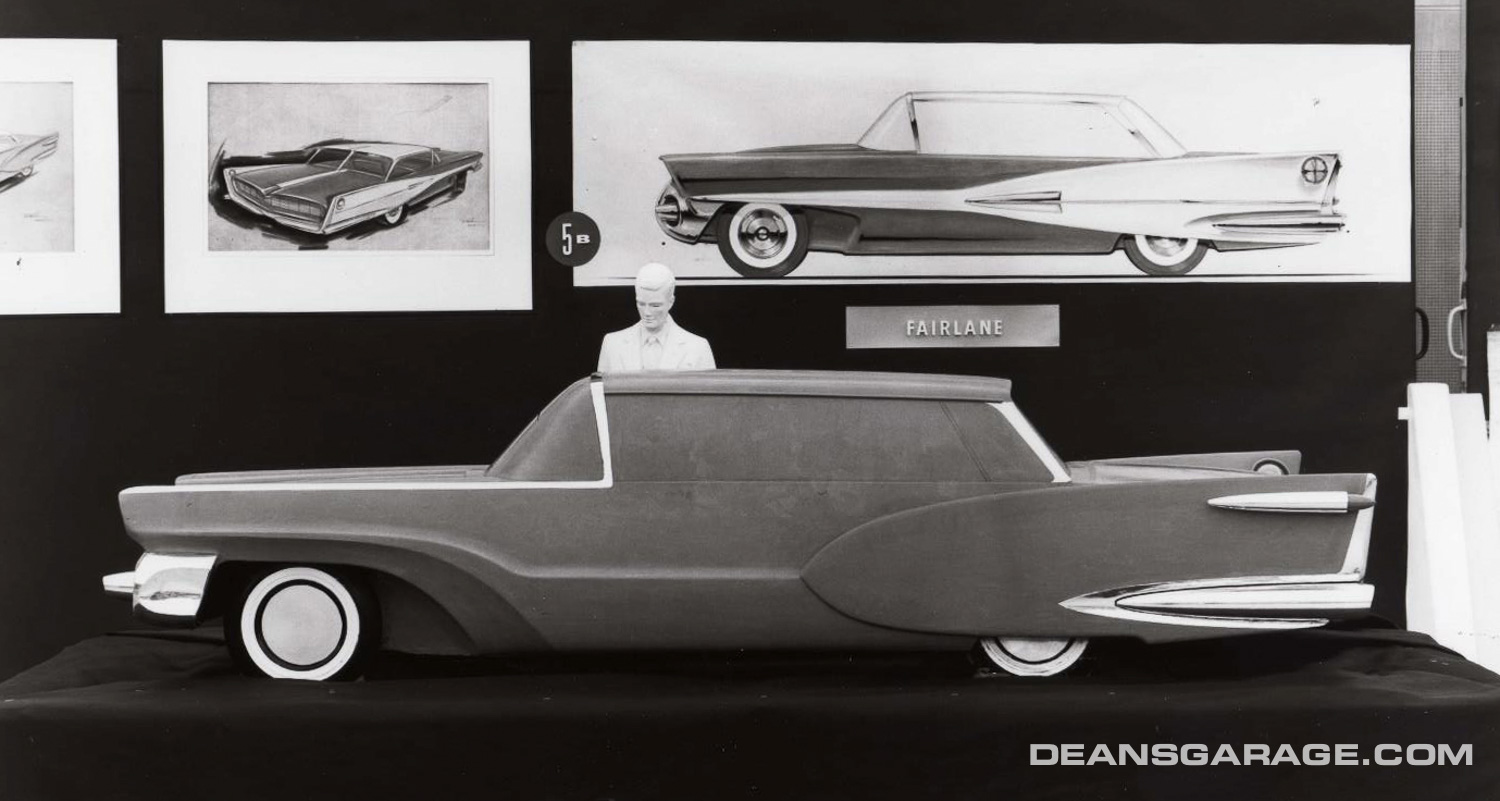
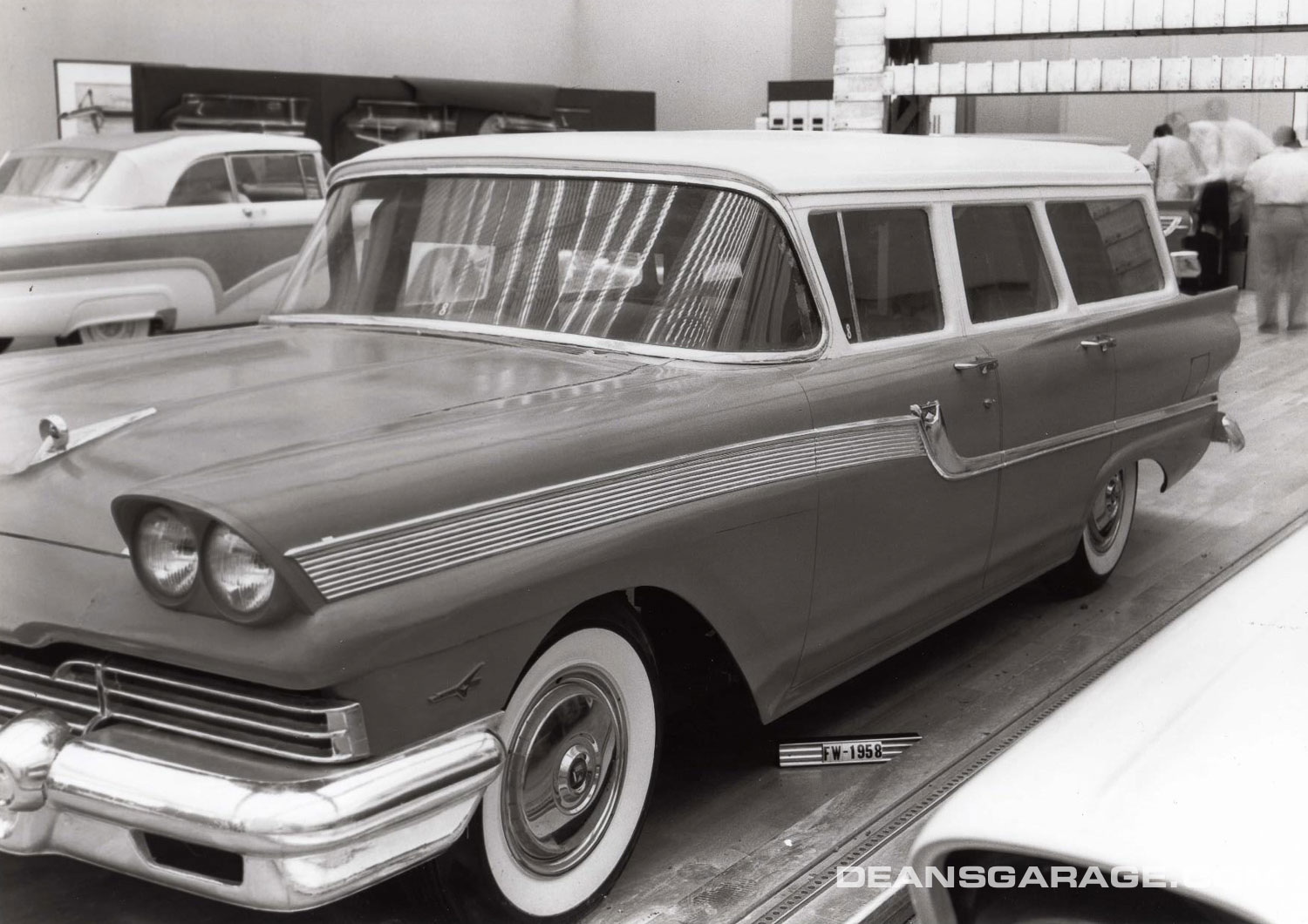
In the Ford Studio full sized clay models were built of the most promising designs. First we have a full-sized clay proposal for the ’58 Ford Country Sedan. Even more interesting in the upper left background is a production ’56 Fairlane Sunliner. Note the DiNoc and fiberglass “wood” sides on this Sunliner. Perhaps being thought of as a modern version of the ’46–’48 Ford Sportsman? My guess is that this was taken after the ’56s had been introduced and perhaps as a proposed limited-edition spring model.
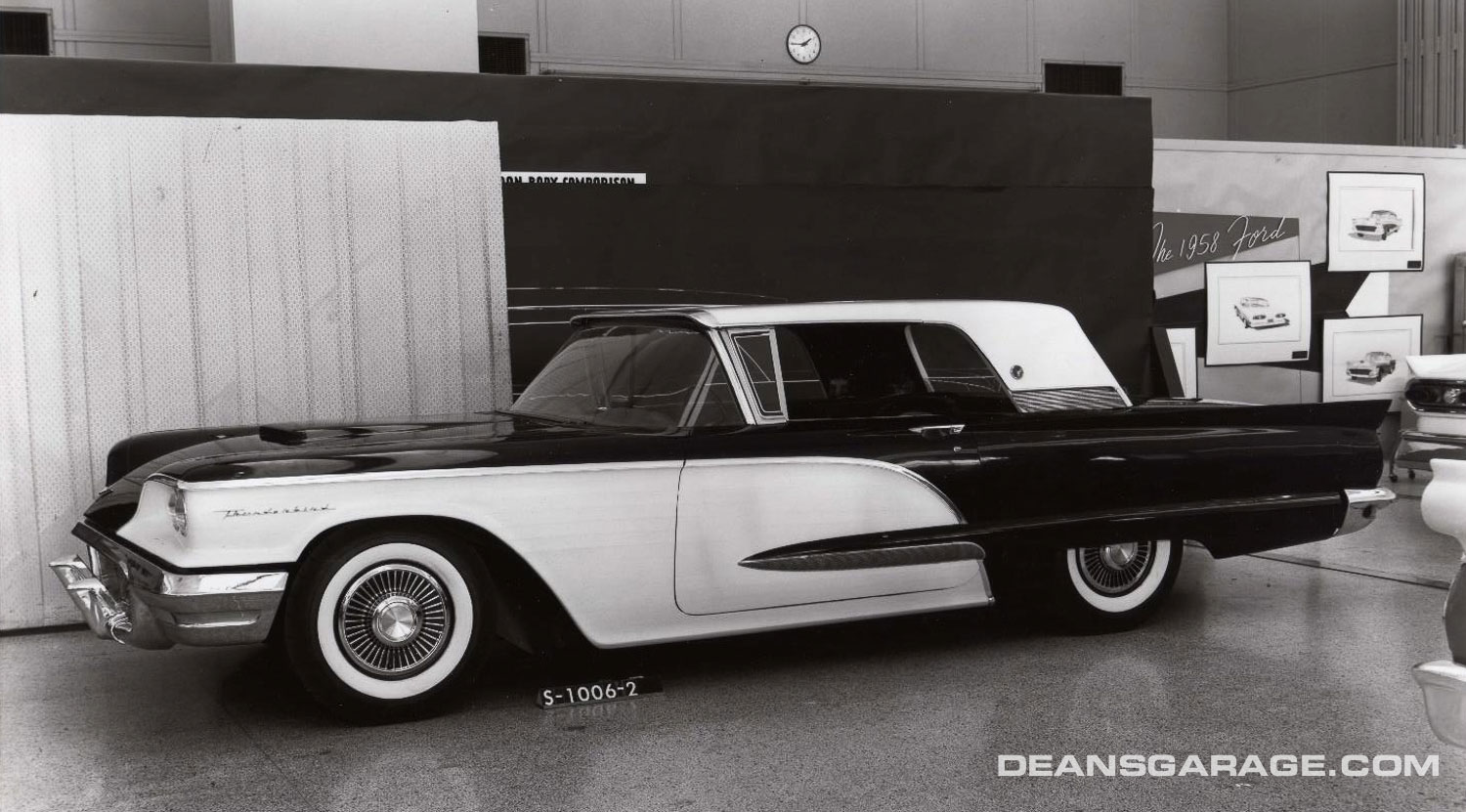
Also in the Ford Studio is this clay 1958 Thunderbird. While the basic design is obviously cast in stone, the stylists are still playing with trim ideas as well as potential two-toned designs.
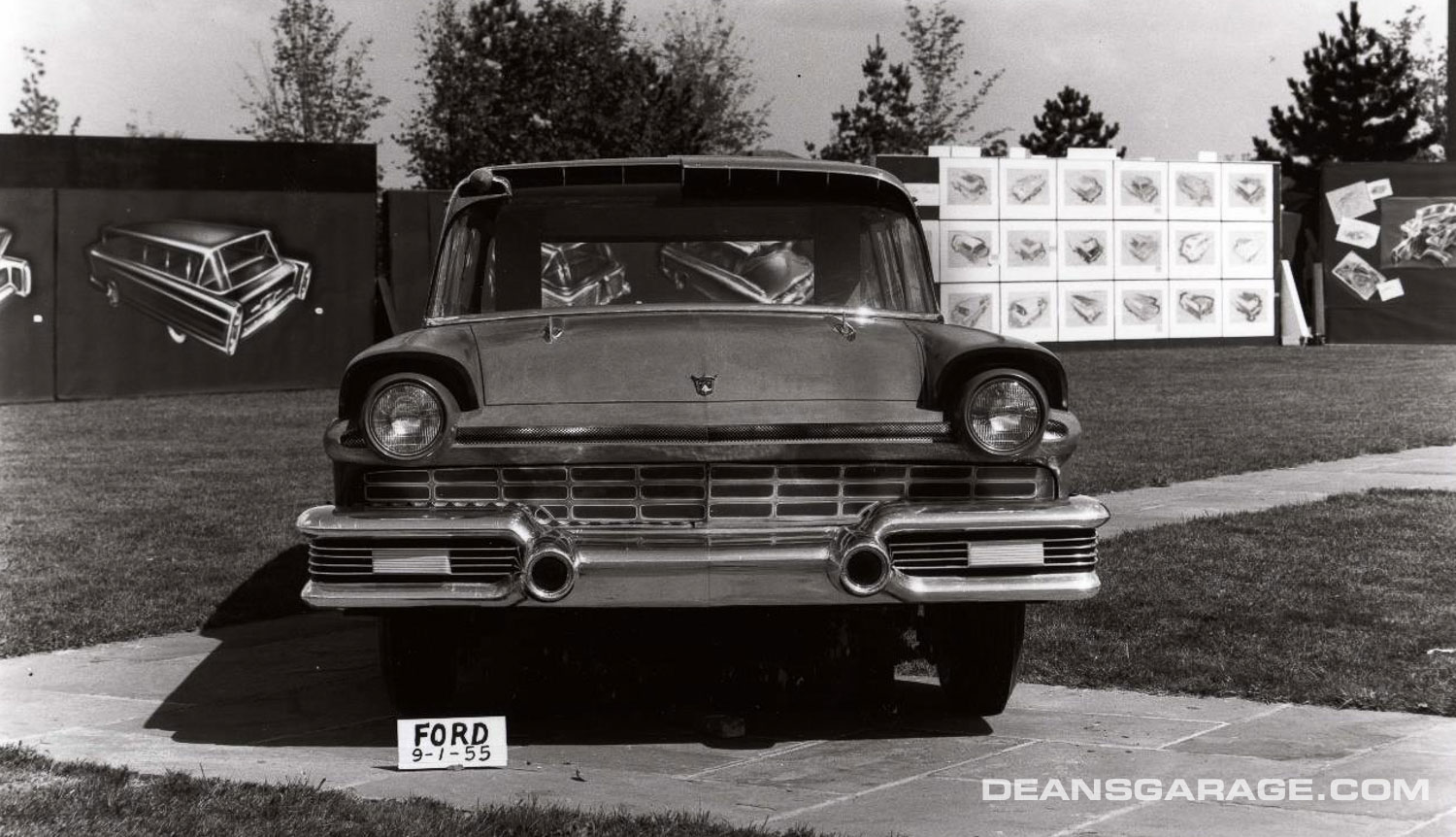
In the patio, full sized clays as well as pre-production cars and even some competitive makes are displayed in natural sunlight. A place where management can stand far back and take in all the proportions. A large enough area where a lineup of ideas in clay can be placed side by side.
This photo taken on September 1, 1955 shows that the design of the ’57 Ford is well along and only a year and a month away from introduction. Many trim details are yet to be worked out. There are countless design elements shown on this full-sized clay that did not make production. The upper windshield lines and front bumper especially.
Note in the background the drawings for a minivan. Ford had the design concept for a minivan all set to go in the 1950’s, but Finance killed the idea as too expensive. Truly a lost opportunity.
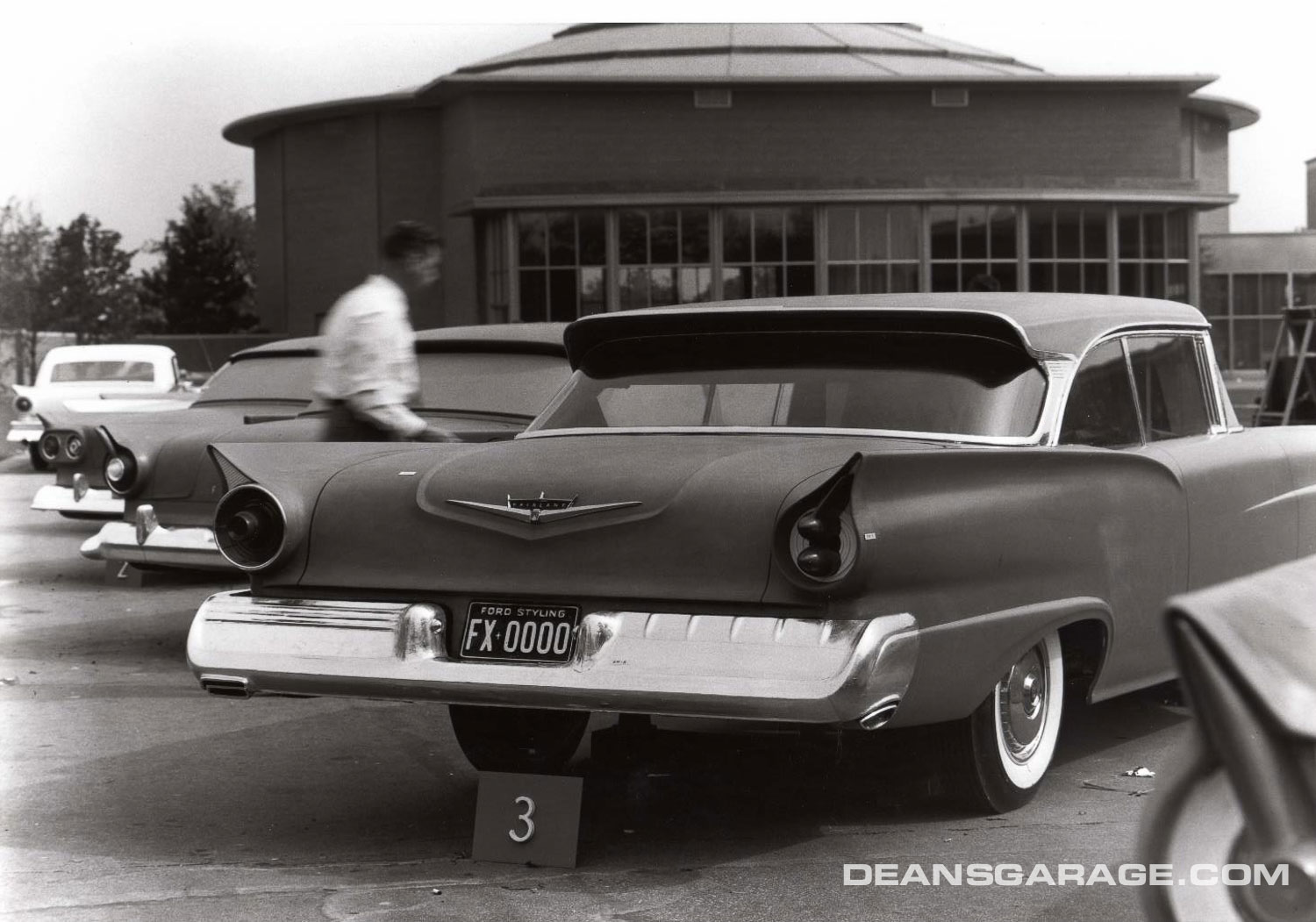
A row of full-size clay models with proposals for ’57–’58 tailllight, deck, and bumper. The Styling Rotunda is in the background.
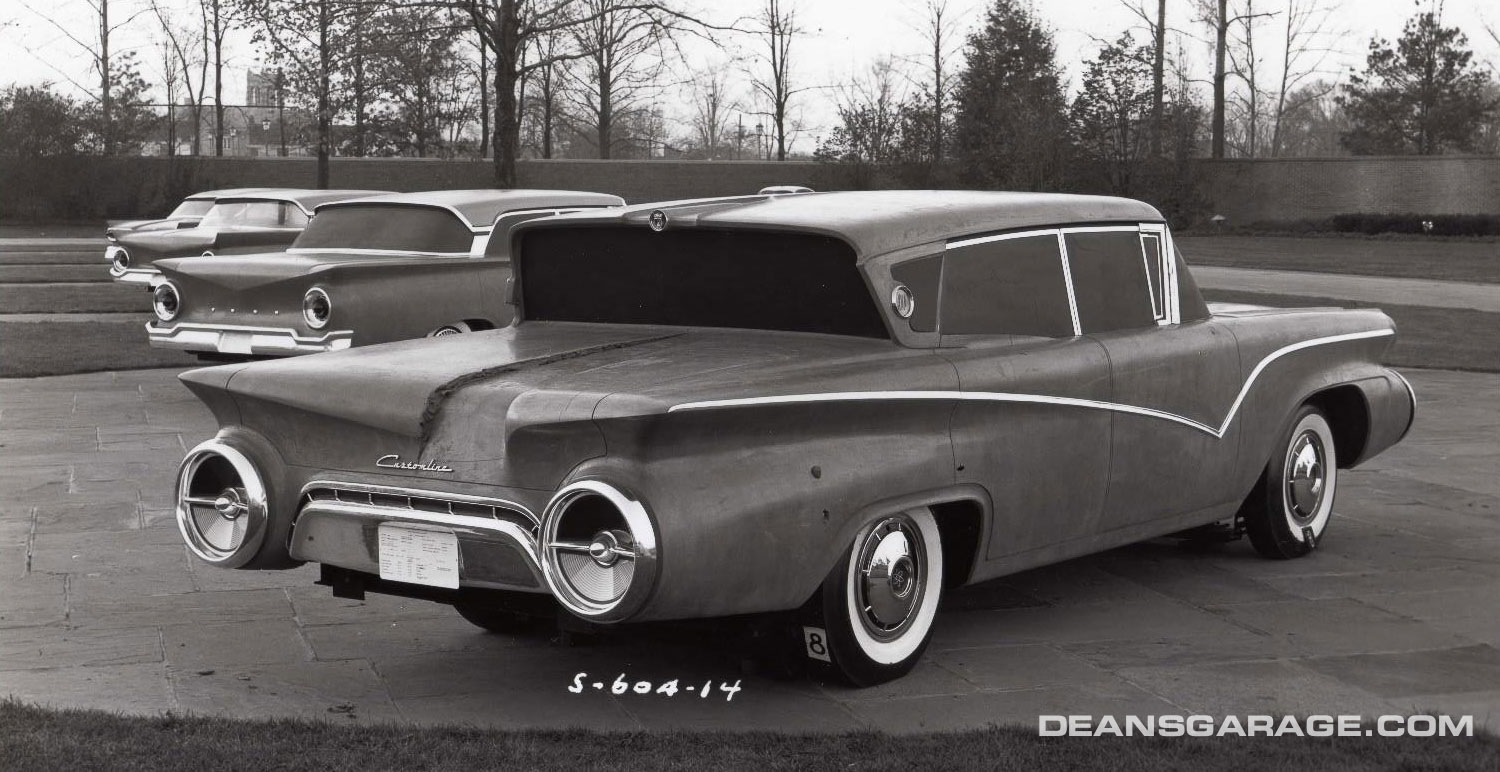
Not all designs that made it as far as the patio were pretty. In fact, a few were rather “unfortunate” such as this proposal for 1959. Clearly this falls into the “What were they thinking” category!
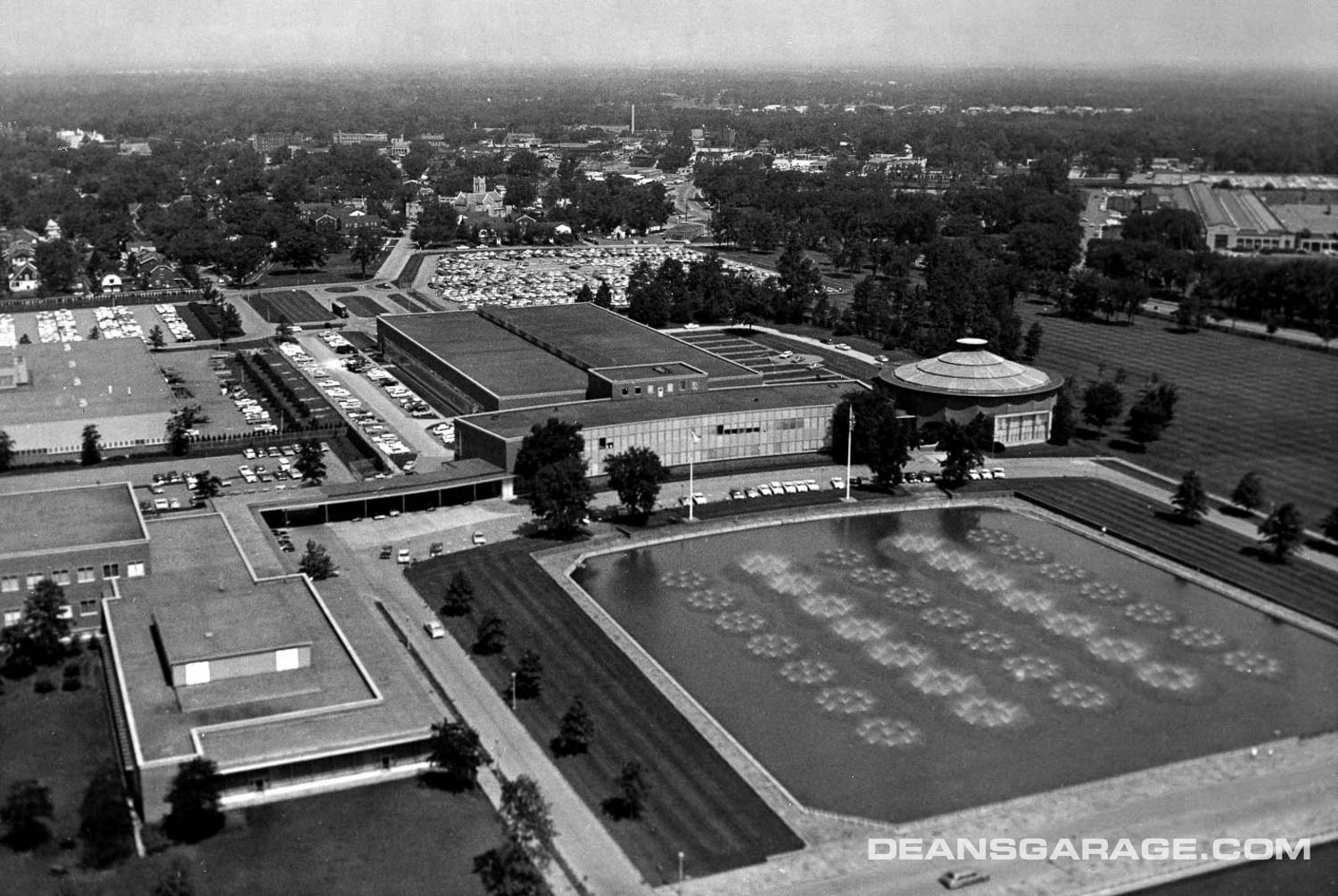
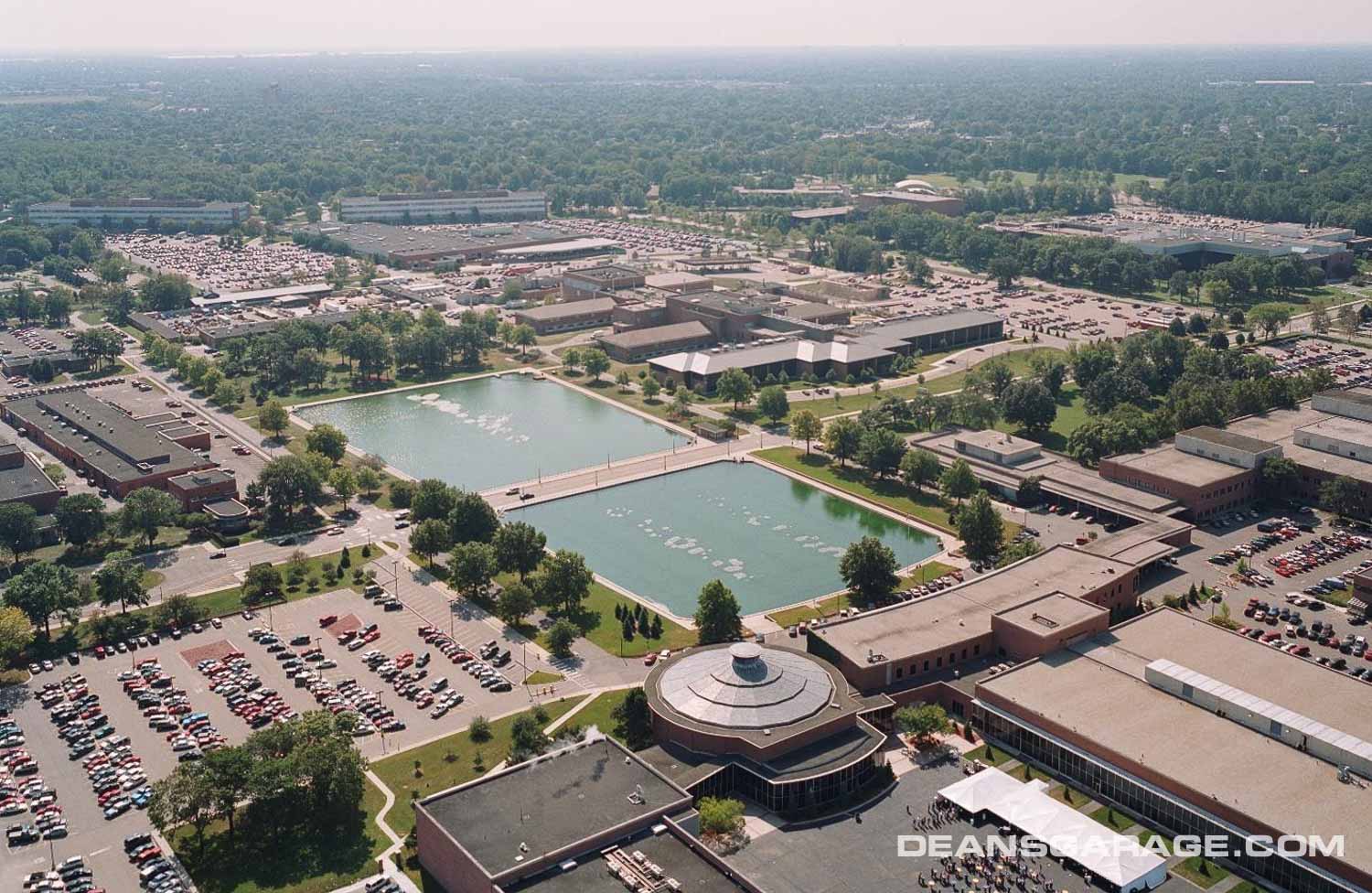
Here’s a nice shot taken in 1960 of the Styling Center. By 1960 several buildings on the left side in this photo had been added. Another row of buildings was later added between the Styling Rotunda and Oakwood Blvd. Along the east side of the Styling Patio. In May of 1960 Gene Bordinat took over from the retiring George Walker. Bordinat didn’t think of himself as a “stylist,” so he again renamed the facility the Design Center according to Jim Farrell.
Note also the trees on the bare residential lot just north of the facilities. A large two- story home used to reside there. It turns out that GM had bought the home and been using the second story in ’53 to spy on the Styling Patio as it had a mostly clear view. A Ford employee noticed all the suspicious coming and goings at this house and notified security. Ford called GM on it, bought the house and promptly tore it down! It remains a green space today.
As time progressed, more Ford models were introduced in the now renamed Design Center which was expanded again several times. This photo was taken in 1983 looking towards the south.
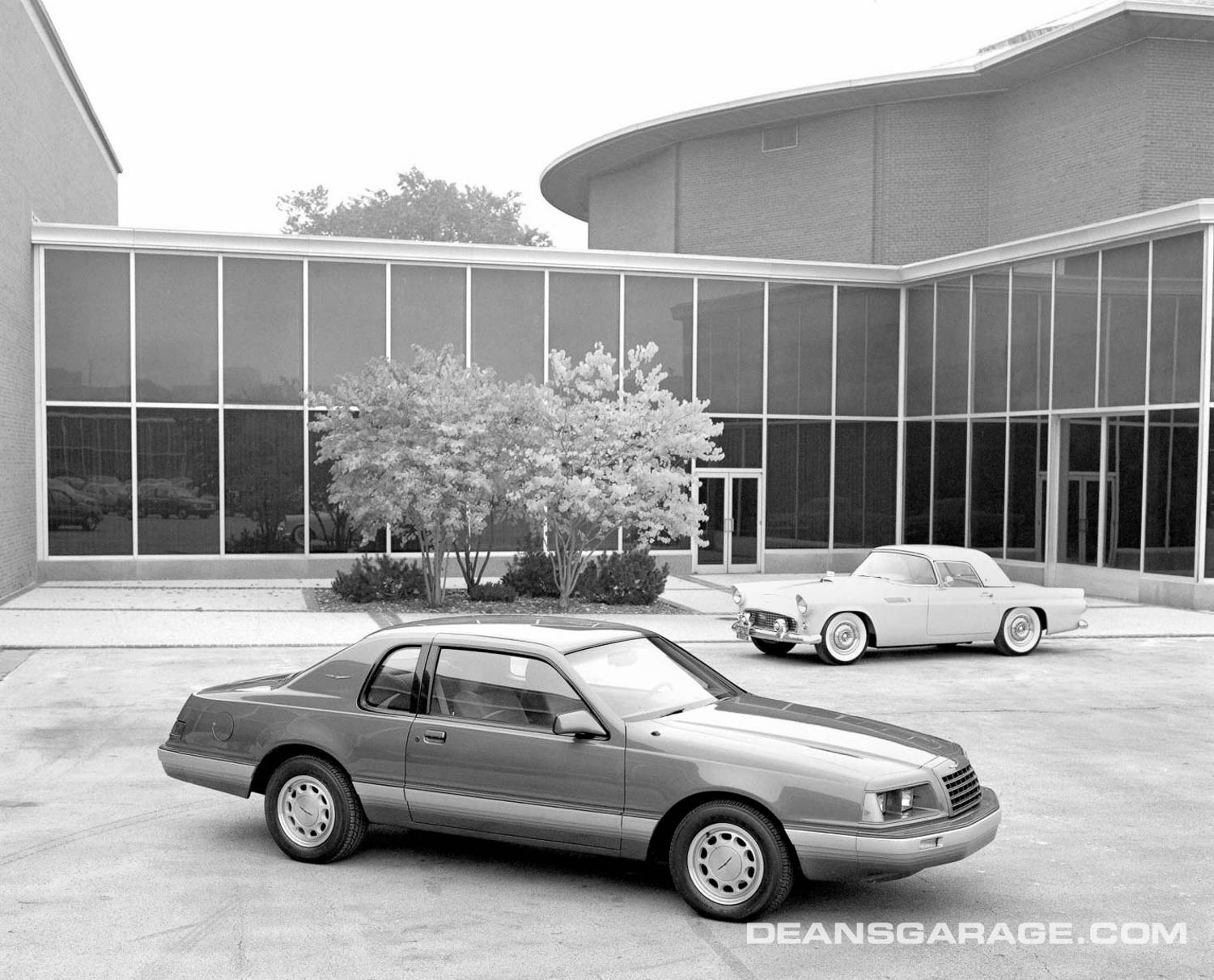
The “Aero Bird” photographed in 1983 on the patio. Ford always measured each new version of the Thunderbird against the original. In a lot of advertising as well. Ford knew people still carried a soft spot in their hearts for the two- seat, original Thunderbird.
The center was renamed again around 2000 to the Product Development Center to encourage both designers and engineers to work more closely together.
As an interesting side note, in 2016 the PDC used over 200,000 lbs. of clay for modeling tomorrow’s Fords! Most all of which was recycled.

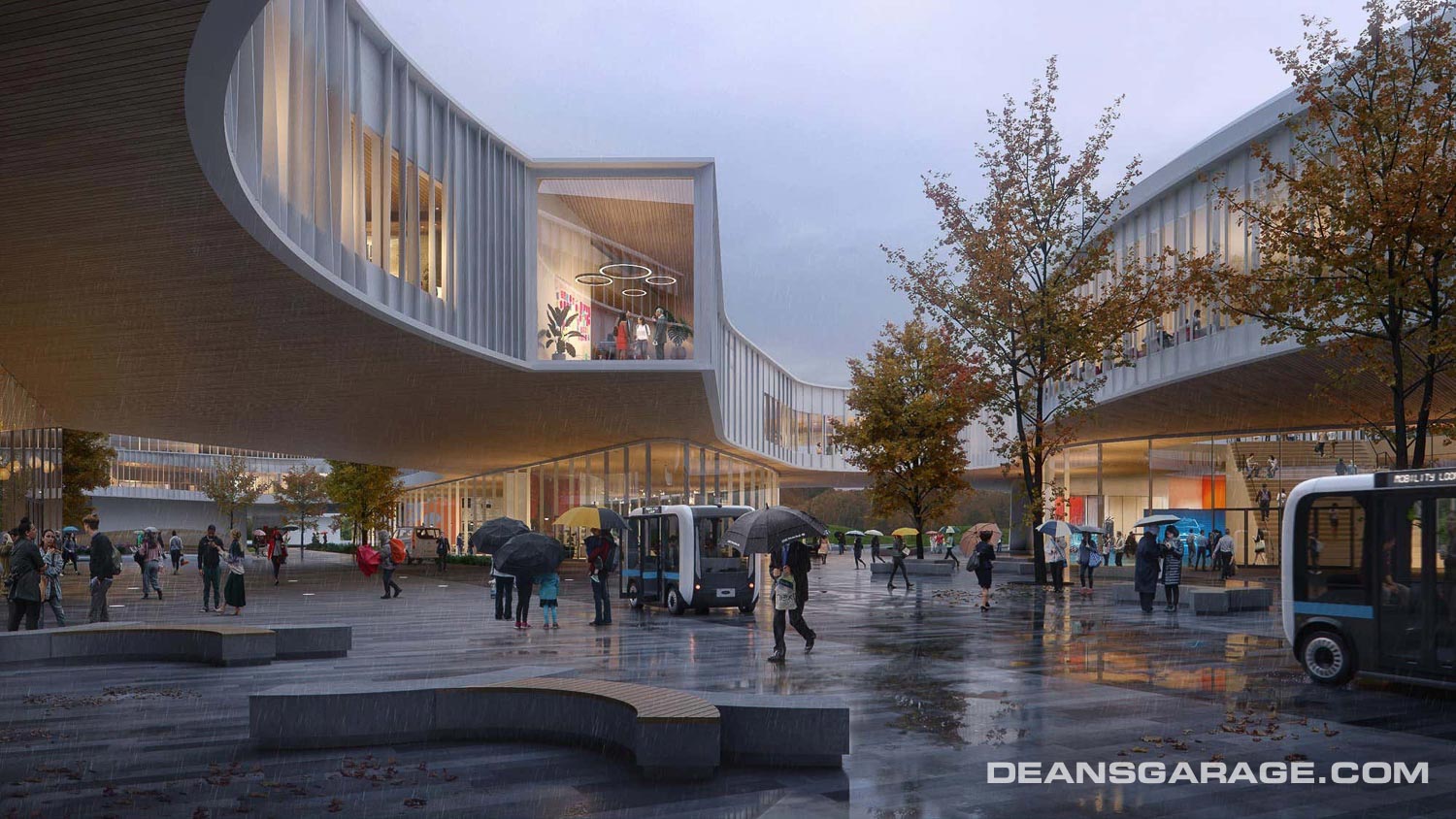
So, you might ask what makes this story so relevant today? Well, after designing every Ford, Lincoln and Mercury car and truck since the ‘55s, Ford began tearing down the PDC in 2020 and replacing it with a new facility mostly on the same site. Every Thunderbird, Mustang, F-100, Galaxie, Fairlane and others we so cherish today ALL came through these doors over the last 70 years. So, it’s a bit bittersweet to see this chapter of FoMoCo history replaced.
One may ask why, and why now? Well, every building that’s 50-70 years old is going to have issues. Connectivity issues. Difficult to maintain. And literally outgrown. In addition, according to Ford, it was getting difficult to get the best grads to come and work in an old and dated complex compared to new and architecturally stunning design centers built in Southern California in recent times by the Asian car companies. Add to the equation the pay’s the same, Michigan winters and it’s hard to remain competitive in attracting the best talent. And to make a difference today, you need brilliant designers.
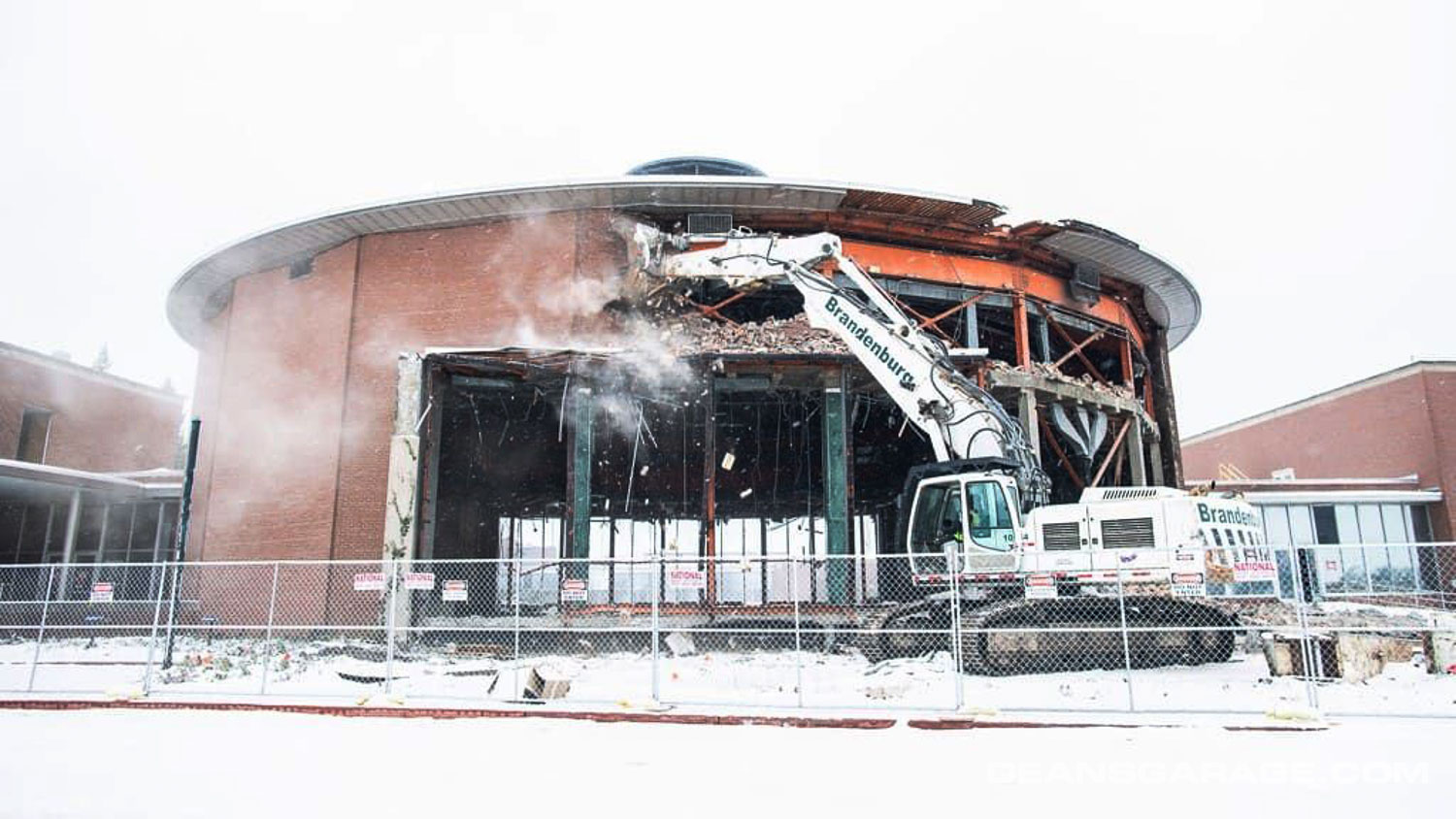
So, bit by bit, the PDC is being torn down. Several buildings are already gone including the Styling Rotunda. The basis for a new and larger center will be up by 2025. A fully operating facility by 2030 and all interconnected by walkways, green space, and people movers.
I was in the PDC in the 1990’s scrounging for some of the photos you see today. It was a stunning facility. A Mid-Century Modern Architectural masterpiece. I just hope Ford re-purposes all the beautiful, priceless mahogany and artwork.